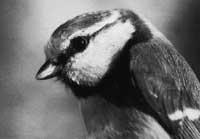Awesome Setting
Birds are usually born in spring, but this work is a hard work for their parents, since in the nest they have to put on, incubate and raise their children. The blue Amilotx is a clear example of this. The female puts between nine and twelve grams of egg (that is, twelve grams or the total amount that weighs! ). Then you have to feed all the young, contributing fifteen times an hour. Genetic factors and the climate to choose the timing of the setting have to do with the abundance of food.

To demonstrate the latter, Paul Isenmann and his colleagues from the Ecological Centre of Montpellier make a curious essay. For this they have adopted two oak trees four kilometers away, that is, with the same climate, but one with evergreen leaves and one with deciduous white leaves. In the white oak most of the grass occurs three weeks before in the green oak and the blue amilotx of white oak has been put eight days before those of green. In addition, green oak females lay less eggs.
Another trial that was carried out was to take as a sample ten out of every fifty hectares and place feeding points on them. In the area where food was placed it had already been burned. The following year the food moved and the same thing happened.
For thirteen years, food prosperity has influenced the implementation so that they can have the greatest resources for the growth of young.





